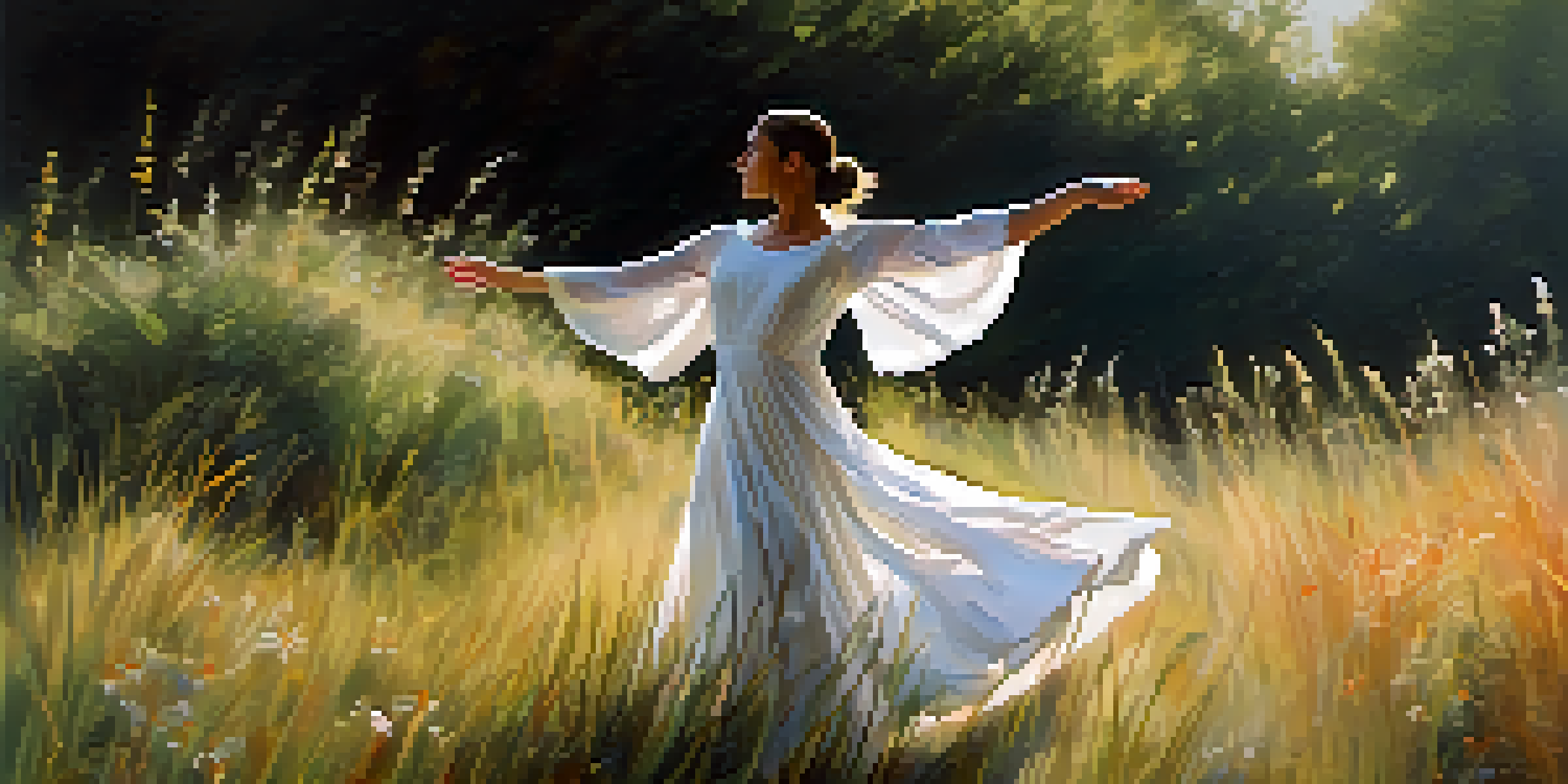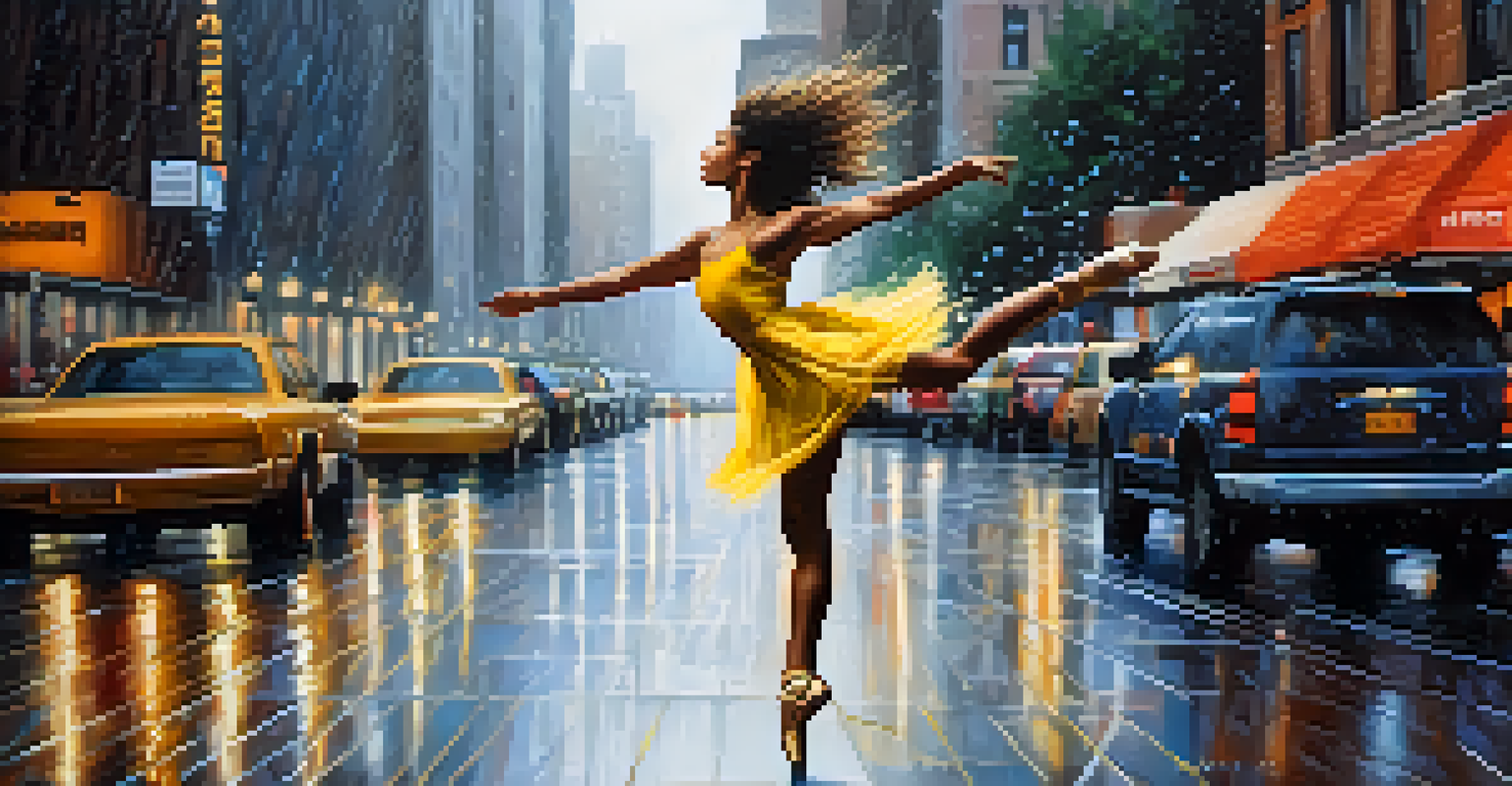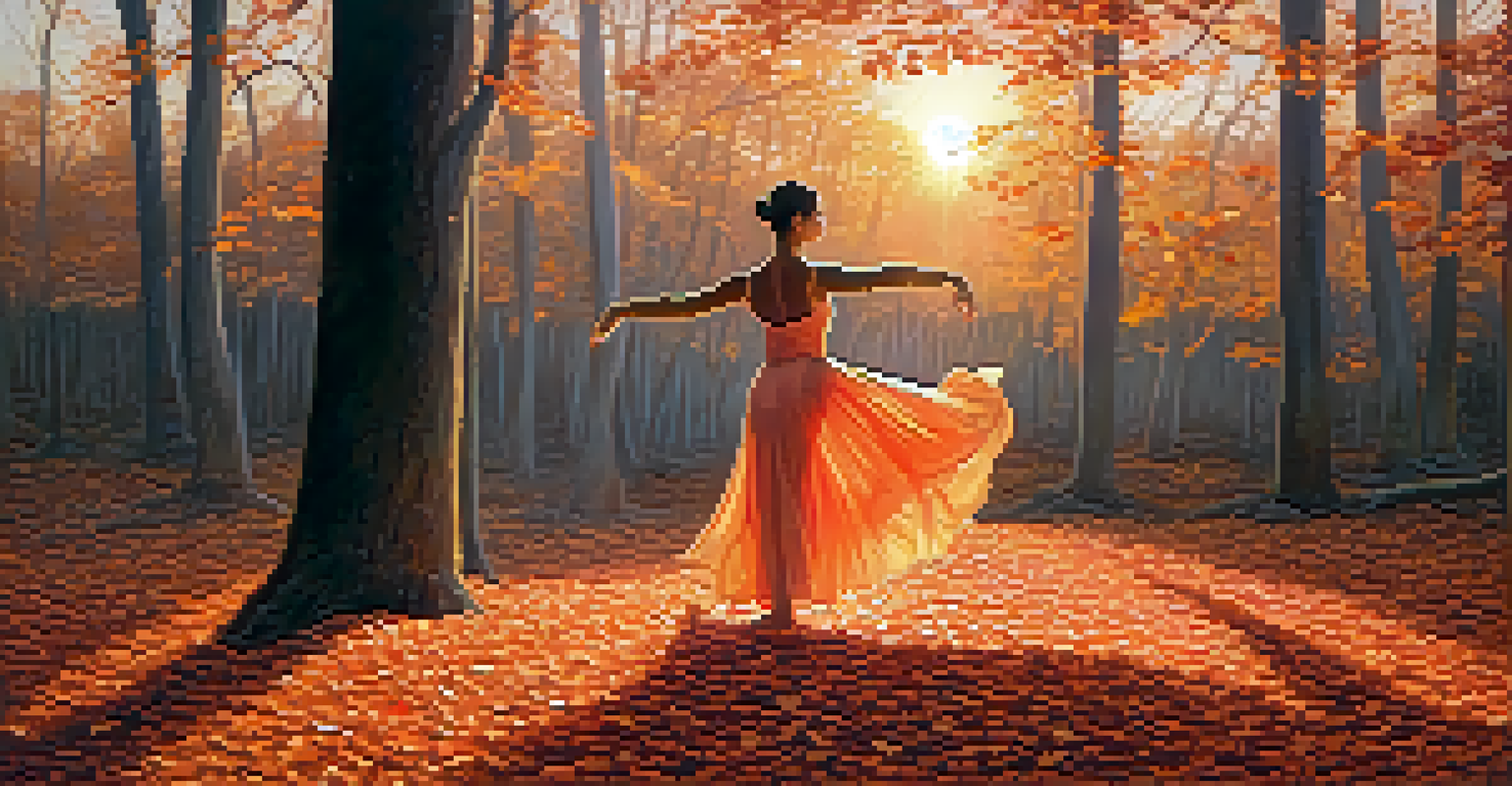The Rhythm of Nature: How Environmental Sounds Inspire Dance

The Connection Between Sound and Movement in Dance
Dance is often seen as a form of expression, but at its core, it is deeply connected to sound. The rhythm of music guides dancers, helping them convey emotions and stories through movement. Just as dancers interpret melodies and beats, they can also find inspiration in the intricate sounds of nature.
Dance is the hidden language of the soul.
Imagine a gentle breeze rustling through leaves or the rhythmic crash of ocean waves. Each sound carries a unique rhythm that can evoke different feelings. By paying attention to these natural sounds, dancers can discover fresh ways to express themselves and connect with their surroundings.
Incorporating these environmental sounds into dance opens up a world of creativity. Dancers can use the variations in tempo and intensity found in nature to inspire dynamic choreography. This connection enriches their performances and fosters a deeper appreciation for the world around them.
How Nature Sounds Influence Dance Styles
Different dance styles often reflect the sounds that inspire them. For example, traditional African dance is heavily influenced by the rhythms of drums and nature, creating powerful movements that resonate with the earth. Similarly, ballet can be influenced by the soft sounds of a forest, leading to graceful, flowing movements.

When dancers immerse themselves in their natural environment, they begin to mimic the sounds they hear. The quick flutter of bird wings might inspire a lively, upbeat dance, while the slow, deep rumble of thunder could lead to more grounded, heavy movements. This relationship between sound and style helps dancers create unique pieces that resonate with audiences.
Sound Inspires Dance Expression
Dancers draw inspiration from the rhythms of music and nature, using these sounds to convey emotions and stories through their movements.
Moreover, the incorporation of natural sounds into choreography can elevate performances to new heights. By blending the essence of their environment into their art, dancers can tell stories that are rich in context and emotion, making their performances not just entertaining, but also deeply meaningful.
The Role of Rhythm in Nature's Soundscape
Rhythm is a fundamental aspect of both nature and dance. Whether it's the heartbeat of a forest or the pulse of a bustling city, rhythms shape our experiences. Understanding these natural rhythms can help dancers unlock new ways of moving and interpreting their surroundings.
To walk in nature is to witness a thousand miracles.
Take a moment to listen to the world around you. The chirping of crickets, the babbling of a brook, and the rustling of leaves all have distinct rhythmic patterns. These sounds can serve as a metronome, guiding dancers in their movements and encouraging them to express what they hear through their bodies.
By recognizing and embracing the rhythmic patterns in nature, dancers can create a dialogue between their movements and the environment. This synergy not only enhances their creativity but also fosters a sense of unity with the world around them.
Mindfulness and Movement: Finding Inspiration in Nature
Mindfulness plays a crucial role in the creative process. When dancers take the time to be present in their surroundings, they can draw inspiration from the sounds of nature. This heightened awareness allows them to connect more deeply with their movements and the environment.
Practicing mindfulness while dancing in nature can transform a simple performance into a profound experience. As dancers listen to the rustle of grass or the call of a bird, they can respond with movements that reflect their feelings and surroundings. This practice can lead to innovative choreography that is both personal and universal.
Nature's Rhythm Shapes Dance Styles
Different dance styles are influenced by the sounds of nature, allowing dancers to create unique performances that resonate with their surroundings.
Incorporating mindfulness into dance encourages a deeper connection with the earth, fostering a sense of respect and appreciation for the environment. It reminds dancers that they are part of a larger ecosystem, one that influences and inspires their artistic expression.
Cultural Perspectives: Nature Sounds in Dance Traditions
Across cultures, the sounds of nature have played a significant role in shaping dance traditions. For instance, Native American dances often incorporate the sounds of the earth, such as the wind and animal calls, to create a spiritual connection. These sounds help tell stories and honor nature's presence.
In other cultures, such as Balinese or Hawaiian dance, natural sounds are integral to the performance. Dancers move in harmony with the environment, reflecting the beauty and sacredness of their surroundings. This cultural perspective highlights the importance of connecting with nature through art.
By exploring dance traditions that honor nature, modern dancers can draw inspiration from these rich histories. They can learn how to incorporate environmental sounds into their own practice, bridging the gap between the past and present.
The Healing Power of Nature Sounds in Dance
Nature has a remarkable ability to heal, and this extends to the world of dance. The soothing sounds of flowing water or rustling leaves can create a calming atmosphere, allowing dancers to express their emotions freely. This connection to nature can be therapeutic, offering a respite from daily stress.
Dancers often find solace in nature, using it as a backdrop for their practice. The serene environment enhances their creativity and helps them reconnect with their bodies. By moving in harmony with the sounds of nature, they can experience a sense of peace and rejuvenation.
Mindfulness Enhances Dance Creativity
Practicing mindfulness in nature allows dancers to connect deeply with their environment, fostering innovative choreography that reflects their experiences.
Incorporating nature sounds into dance therapy can also benefit mental health. The rhythmic patterns and soothing melodies of the natural world can promote relaxation and emotional release, making dance a powerful tool for healing.
Creating New Choreographies Inspired by Nature's Sounds
As dancers become more attuned to the sounds of their environment, they can create innovative choreographies that reflect this inspiration. Each sound can inspire a movement, transforming the simple act of listening into a dynamic dance experience. This approach encourages experimentation and creativity.
For example, a dancer might listen to the sound of rain and respond with quick, light footwork that mimics the rhythm of raindrops. Alternatively, the deep rumble of thunder could inspire slower, more grounded movements. This interplay between sound and movement fosters a unique artistic expression.

By embracing the sounds of nature, choreographers can create performances that resonate with audiences on a deeper level. These works not only entertain but also encourage viewers to appreciate the beauty of the natural world and its influence on art.